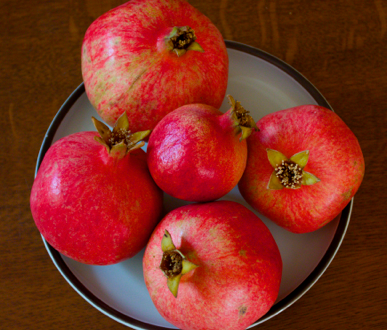
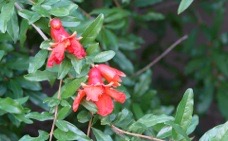
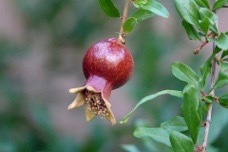
This is the story about the first year that we had a “crop” from our pomegranate “tree”. From it we had fresh fruit and the slightest taste of syrup from the bottom of a pot.
Early in the season the pomegranate had beautiful flowers which the hummingbirds loved to visit. Later the fruit burdened the bush with the look of a festival - bright balls of decoration. Once safely in the house the fruit paused for a photograph before opening for the world (sometimes a rather messy process because the pulp [the good part] is juicy).

When the fruit is opened (here I cut it open but some people prefer to tear them open, with more than a little effort, I might add) the many seeds are revealed. Pomegranate fruit (more precisely berry) may have from 200 to 1400 seeds. The seeds are enclosed in a whitish matrix which is not eaten. Separating the berries from the matrix can be a bit messy, because they are very juicy and very delicate. A bowl of the berries is shown below.
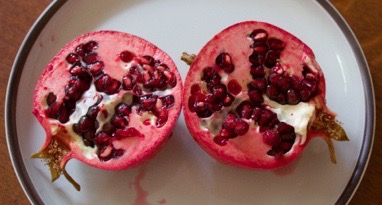
Before and after

That year we had pomegranate berries in salad and to snack on. There is a sweet tartness to their taste which is very refreshing. But most of the “harvest” went into the making of pomegranate syrup. The resulting bottle (photo below) never made it to our table, being destined as a gift. But, as I alluded to above, we did get to “lick the pan” - and a good pan it was.
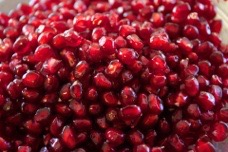
ORIGIN
Pomegranate was first domesticated in what is now Iran by at least 3,000 B.C.E., spread throughout the Mediterranean and India, and eventually made it to the Americas in the ships of the Spanish.

DESCRIPTION
The fruit (a berry) of the Pomegranate is about the size of an orange. The skin is tough and is a bright red. The inside of the berry consists of numerous seeds, each covered with an edible sarcotesta, or jelly like covering. The seeds are incased in a white matrix of pulp.
There are more than 500 cultivars of this fruit.
FOOD
When the fruit is eaten raw, in a salad or as a “nibble”, the seed and jelly covering are consumed entirely. It generally has a tart-sweet taste, which varies with the cultivar. The seeds are often juiced, making a pomegranate drink which is popular in Europe, the Middle East, and increasingly in North America. Syrup, like that mentioned to the left, and pictured below, can also be made from the juice. Commercial “pomegranate syrup” generally has a number of other fruit juices added to it, to lower the cost of production.
The widest variety of uses comes from the pomegranate’s places of origin and early use. In those locales it is used as a spice (anardana in India and Pakistan), as an accompaniment to fish and meet (as a sauce), and as an ingredient in soups (Greece and Cyprus). In Mexico it is used to make chiles en nogada.
A lot of seeds go a short way.
Enjoy each one.
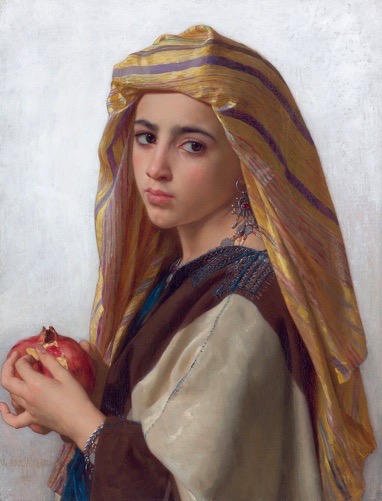
Girl With A Pomegranate
by William-Adolphe Bouguereau - 1875